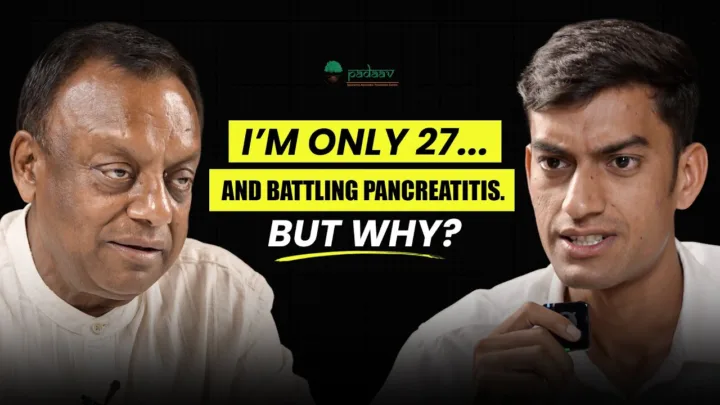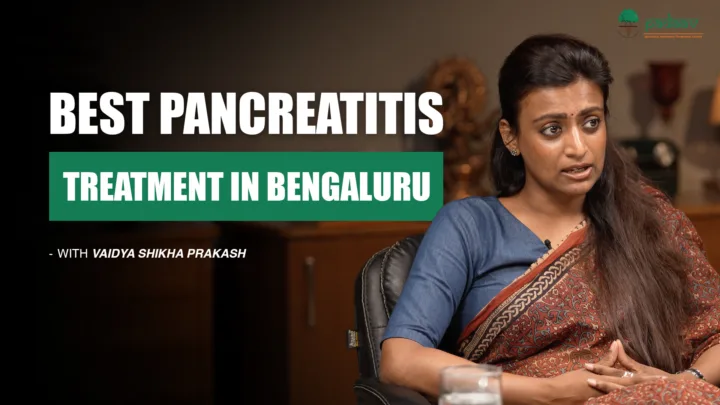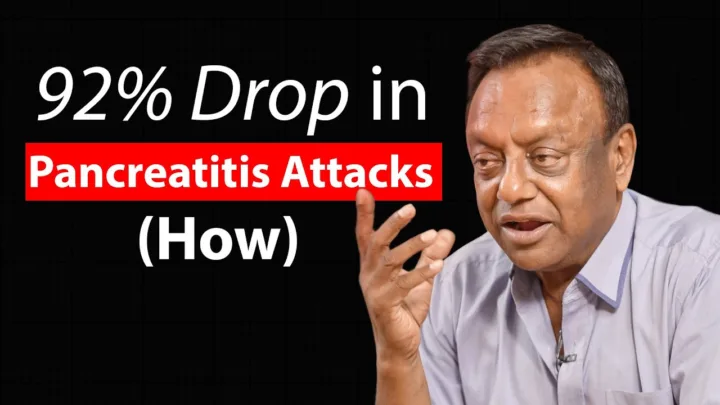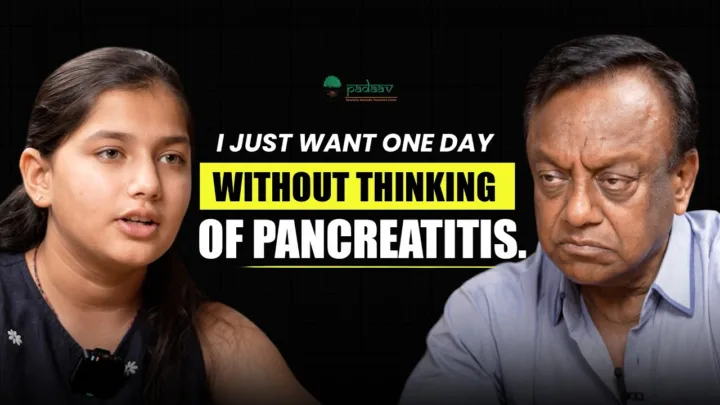Insights from Vaidya Shikha Prakash (Padaav)
Pancreatitis, the inflammation of the pancreas, is a complex disease often shrouded in misinformation. Vaidya Shikha Prakash addresses the most common myths and misconceptions about its symptoms, diagnosis, and progression, emphasizing the need for proper investigation and debunking dangerous assumptions about self-recovery.
Part 1: Symptoms and Pain—Don’t Rely on Just Pain
1. Pain Location and Severity
-
-
Myth: Pancreatitis pain is only on the left side and never goes to the back.
-
Reality: Pancreatitis is a retroperitoneal organ, meaning it is located towards the back. Its pain typically starts on the left side and radiates fiercely to the back.
-
-
-
Myth: Pancreatitis pain and a heart attack feel different.
-
Reality: This is a dangerous myth. The severe, sharp pain of Pancreatitis (especially acute cases) is often so intense and located on the left side that it frequently mimics cardiac pain. Doctors in emergency rooms often struggle to differentiate between the two.
-
-
Myth: If the pain stops, the disease is gone.
-
Reality: Absolutely not. Pain relief is not recovery. Pancreatitis can cause damage and malnutrition even when the pain is mild or absent. Recovery requires proper diagnosis and treatment of the underlying organ damage.
-
2. Recognizing the “Stomach Infection” Mimic
-
Myth: Vomiting, fever, and tachycardia (rapid heartbeat) are just stomach infection symptoms.
-
Reality: These three symptoms are common signs of a serious Acute Pancreatitis attack (especially necrotizing pancreatitis). They should never be taken lightly and require immediate medical investigation.
-
Part 2: Lifestyle and Weight Loss Misconception
1. Weight Loss and Digestion
-
Myth: Weight loss is just due to diet mistakes.
-
Reality: Weight loss in Pancreatitis is primarily due to mal-digestion and mal-absorption (the inability to digest and absorb fat/nutrients) caused by the damaged pancreas. This leads to Steatorrhea (oily stools due to undigested fat) and nutritional deficiency, not just poor diet choices.
-
2. Pancreatitis in Women and the Elderly
-
Myth: Pancreatitis is so rare in women that it can be ignored.
-
Reality: Pancreatitis affects all genders and ages. The perceived rarity in women is often due to delayed diagnosis or symptoms being dismissed as general pain.
-
-
Myth: Mild pain in the elderly is not serious.
-
Reality: The severity of the disease is not diminished by age. Acute attacks in elderly patients (like the documented 82-year-old patient) are just as critical and require full attention.
-
Part 3: The Diagnosis Dilemma—Tests and Imaging
1. Blood Tests (Amylase and Lipase)
-
Myth: A normal Lipase level means Pancreatitis is impossible.
-
Reality: This is false. In Chronic Pancreatitis, the pancreas can be so severely damaged that it can no longer produce elevated enzymes, even during a flare-up. Therefore, normal enzyme levels do not rule out chronic disease.
-
-
Myth: Only an Amylase test is needed for confirmation.
-
Reality: Both Amylase and Lipase are generally only elevated during an acute attack. A definitive diagnosis requires a combination of clinical symptoms, blood tests, and radiological tests (imaging).
-
2. Imaging and Special Procedures
-
Myth: An ultrasound alone shows everything.
-
Reality: Ultrasound has limitations because the pancreas is a retroperitoneal organ and can be obscured by gas. It is good for checking gallstones (a common cause of acute pancreatitis), but MRI, CT scans, and EUS (Endoscopic Ultrasound) are often required to fully assess structural damage, inflammation, and potential blockages.
-
-
Myth: MRCP/EUS is only for money-making.
-
Reality: These specialized tests are necessary for complex cases to visualize the pancreatic ducts, check for strictures or stones, and confirm the extent of morphological changes and inflammation that basic scans might miss.
-
-
Myth: ERCP should be a routine checkup.
-
Reality: ERCP is an invasive procedure used for targeted treatment (like stenting or ballooning blockages). It should only be performed when specifically advised by a surgeon for therapeutic needs, not as a routine diagnostic tool.
-
3. Children and Early Diagnosis
-
Myth: Children’s tummy pain is just indigestion.
-
Reality: Children who experience recurring abdominal pain should be fully investigated. While historically rare, Pancreatitis in children is increasing. Parents often dismiss early symptoms as general indigestion until the condition progresses and requires extensive treatment.
-
Conclusion
The symptoms and progression of Pancreatitis are often misunderstood. Dependence on pain level or single lab reports is misleading. The disease requires proper, layered investigation to address the underlying cause and prevent potentially fatal complications. Second opinions in such a complex disease are always welcome and recommended.






